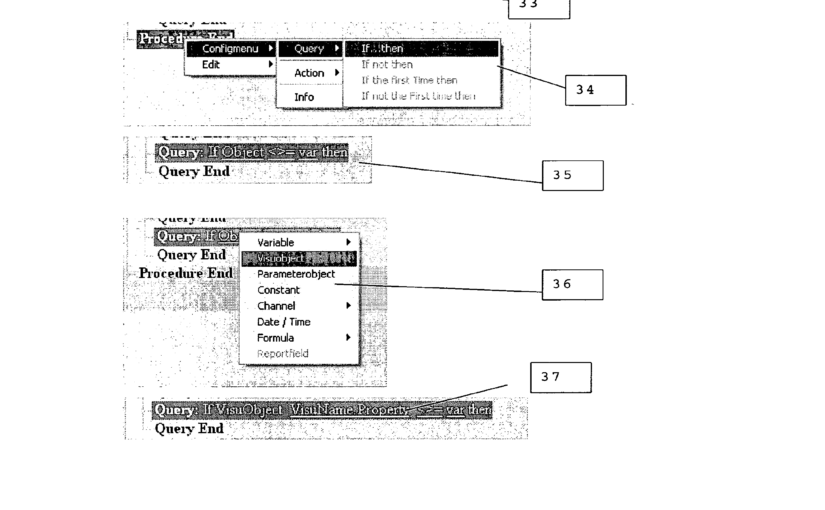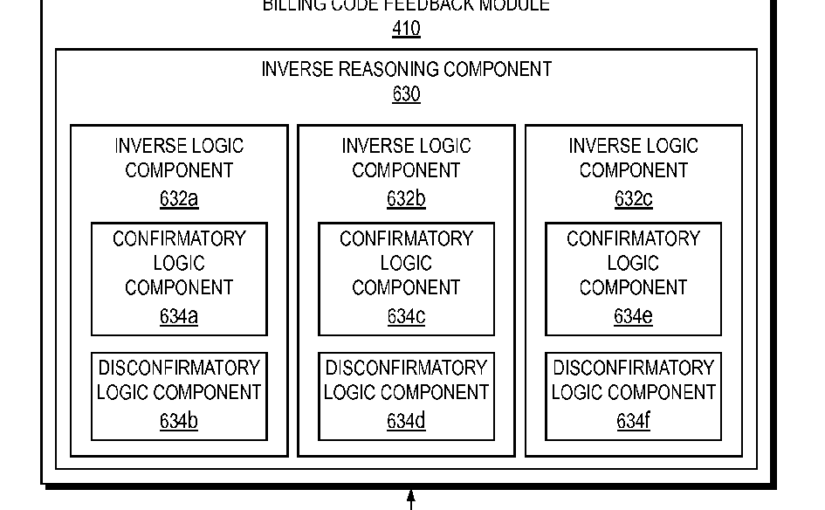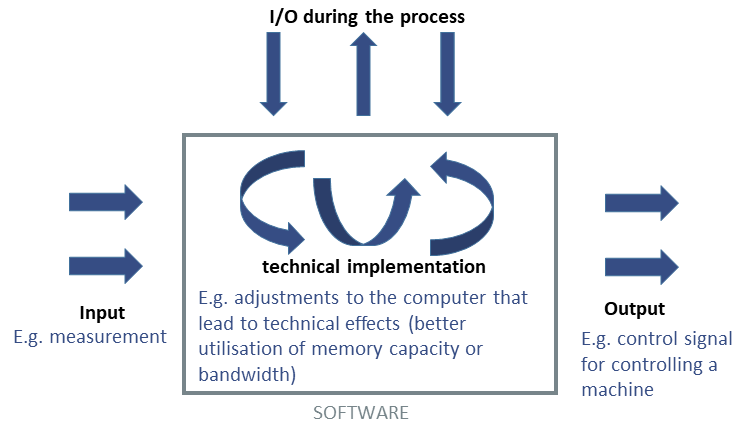The invention is directed to a graphical programming language and environment that should enable a user to create programme code without a great deal of learning effort or special expertise. The definition and provision of a programming language does not contribute to the solution of a technical problem according to the Board.
Object of the Invention:
- enable persons without special prior knowledge in the position to create their own computer programmes
- the application proposes a graphical programming system as a solution
- the system provides different “programme modules” which can be linked together according to predetermined rules
- graphic symbols are assigned to the program modules, which the user can arrange on a “visualisation surface” and which are linked there by means of suitable lines to form a “structure diagram”
- each programme module of a structure diagram corresponds to a “programme code section” and the entire structure diagram thus to a programme
- thus, the user can define programme code “on a text basis” by manipulating graphic symbols on the computer screen without having to enter it directly
- when the user selects a programme block, a display interface (e.g. a window) opens in which the user can edit the programme code section of this block
Board:
- the invention is directed to a graphical programming language and environment that should enable a user to create programme code without a great deal of learning effort or special expertise
- the effect of reducing the user’s mental effort when creating programmes is not in itself a technical one in the opinion of the Board
- this is all the more true as it is aimed at equally for all programmes, regardless of the purpose of the developed programme
- when programming – in the sense of formulating programme code, “coding” – the programmer must select those formulations from the repertoire of a programming language that lead to the desired result when the programme is executed
- the programming language defines, on the one hand, which formulations are permissible as “well-formed” (syntax) and, on the other hand, which “behaviour” is attributed to a program (operational semantics)
- in individual cases, the choice of programming language can influence how easily (and sometimes whether at all) the solution to a problem can be formulated as a programme
- the activity of programming itself is an essentially mental process – comparable to the verbalisation of a thought or the formulation of a mathematical fact in a calculation – which, in the words of the Enlarged Board of Appeal in G 3/08 lacks “further technical considerations”
- this applies at least if and to the extent that, as in the present case, the activity of programming does not serve to achieve a technical effect in a causal manner in the context of a specific application or environment.
- –> the definition and provision of a programming language or programming language tools per se does not contribute to the solution of a technical problem



